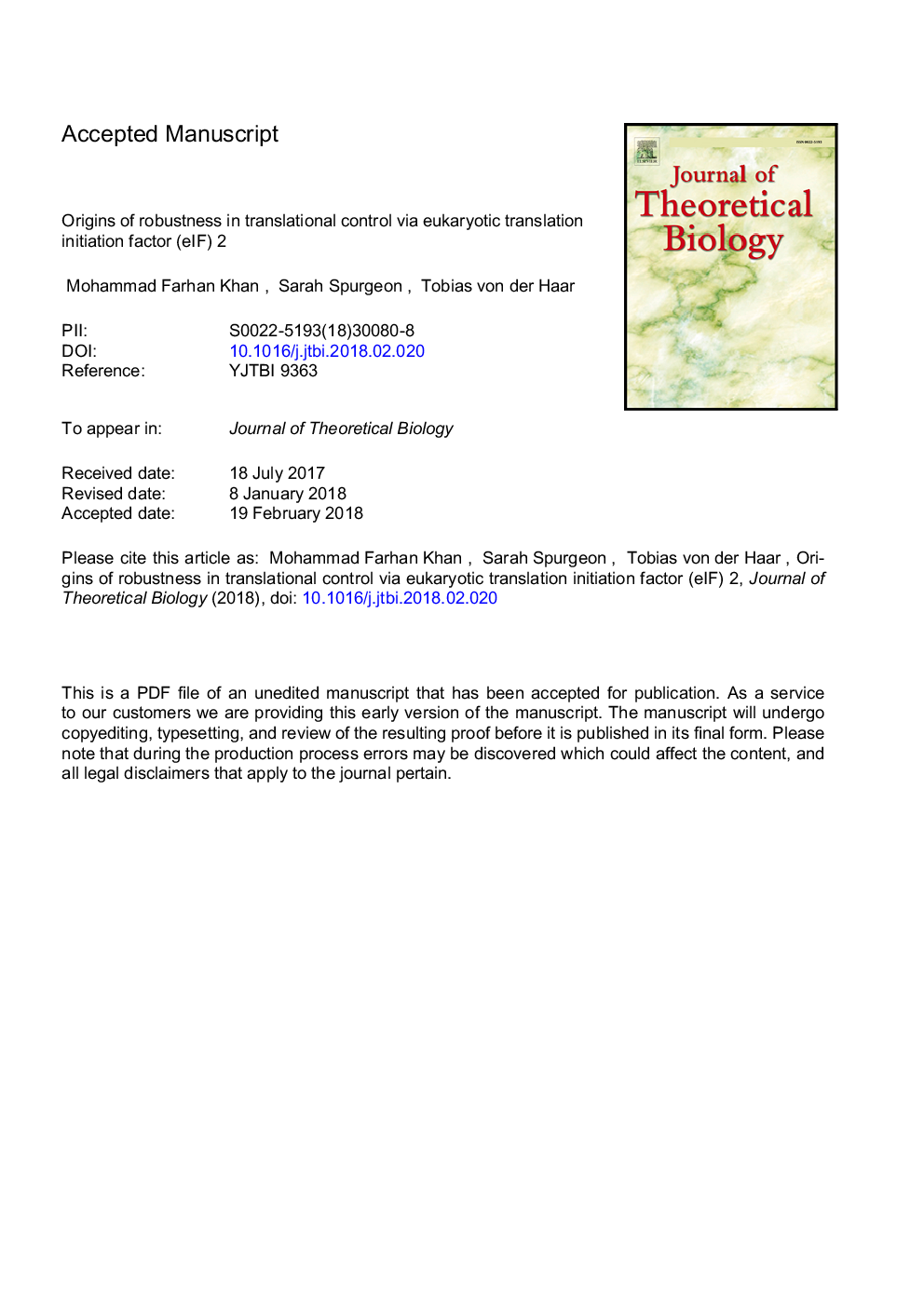| Article ID | Journal | Published Year | Pages | File Type |
|---|---|---|---|---|
| 8876760 | Journal of Theoretical Biology | 2018 | 30 Pages |
Abstract
Phosphorylation of eukaryotic translation initiation factor 2 (eIF2) is one of the best studied and most widely used means for regulating protein synthesis activity in eukaryotic cells. This pathway regulates protein synthesis in response to stresses, viral infections, and nutrient depletion, among others. We present analyses of an ordinary differential equation-based model of this pathway, which aim to identify its principal robustness-conferring features. Our analyses indicate that robustness is a distributed property, rather than arising from the properties of any one individual pathway species. However, robustness-conferring properties are unevenly distributed between the different species, and we identify a guanine nucleotide dissociation inhibitor (GDI) complex as a species that likely contributes strongly to the robustness of the pathway. Our analyses make further predictions on the dynamic response to different types of kinases that impinge on eIF2.
Keywords
Related Topics
Life Sciences
Agricultural and Biological Sciences
Agricultural and Biological Sciences (General)
Authors
Mohammad Farhan Khan, Sarah Spurgeon, Tobias von der Haar,
